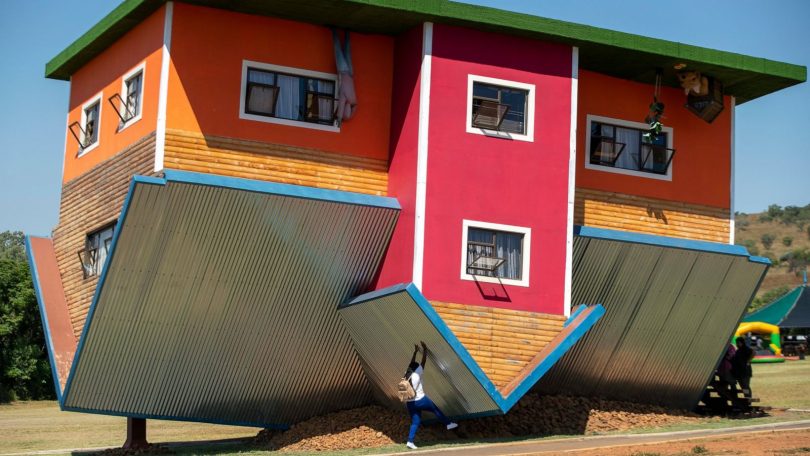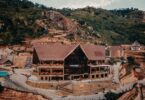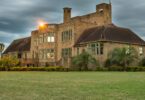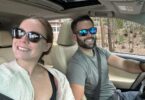Wildlife, breathtaking sceneries, globally acclaimed cities and an undying history define Nelson Mandela’s land. Shockingly though, the upside down house in South Africa comes up as a major historical attraction besides too.
It’s exactly what it sounds like: a house constructed with the ground floor on top. Everything that usually sits on the ground inside the house suspends from the ceiling. The mind simply cannot wrap itself around what is happening, making the experience all the more incredible.
Most visitors spend between an hour and two hours exploring the house and capturing breathtaking moments. It’s amazing to see the creativity that flows here. The fact that the house is perched precariously on a slanted foundation also lends much to the overall effect.
Table of Contents
Which Province is the Upside Down House in South Africa?
The upside down house in South Africa is in Hartbeespoort, North West Province. Hartbeespoort is 47miles north of the capital, Johannesburg. The house is something of a tourist attraction.
It draws in both locals and visitors who want to snap photos of themselves beneath the wobbly roof. Or inside the rooms where the beds, couches, and other pieces of furniture are suspended from the ceiling.

The upside Down House in South Africa. Photo/RealEsatate
How Much is Entrance fee at Upside Down House?
The Upside Down House in South Africa isn’t a place to stay the night, but it does make for some great photo ops. There is plenty of time to visit on your next vacation to Johannesburg.
It is open Monday through Friday from 9 a.m. to 6 p.m. and Saturday and Sunday, as well as on public holidays, from 7 a.m. to 6 p.m.
The entrance fee to this out-of-this-world attraction is 100 South African Rand (about $6 USD) for adults. Then, 60 South African Rand (approximately $4 USD) for seniors and children aged four to seven, and free of charge for children under three years.
Visitors aged 80 and above also get in for free. You should also be aware that various group discounts are available.
These are the takeaways from the entrance fee:
| Category | Entrance fee |
| Adults | 100 rand ($6) |
| Children (four to seven years) | 60 rand ($4) |
| Children below three years | Free |
| People above 80 years | Free |
In addition, there is no limit to how many times you can view the house. In fact, it’s only by the second or third time around that ideas for creative photos start to flow. Kids have more fun with coin-operated child rides and jumping castles.
What is Inside the Upside Down House?
The upside down house in South Africa has a typical layout of a normal house. It features a bathroom, kitchen, living room, bedroom, and playroom for the kids, but everything is put backwards. The ceiling is covered with wood, and there are cabinets, seats, and even a toilet suspended from the rafters.
Imagine this as a pleasant change of pace. There is a recent tendency toward inverting norms. Recently, inverted Christmas trees are becoming increasingly common. Thus, the South African inverted house is a masterpiece.

The Upside Down House in South Africa. Photo/RealEstate
While it may appear like a giant visited and disrupted every arrangement, the architectural design is intricate. Any engineer or architect can attest to the fact that this is no small effort. For example, holding all the furniture in its proper location when it’s upside down is just as difficult as balancing a whole home on the edge of a sloped roof.
You are not, despite appearances, entering another dimension when you enter this house-turned-art installation. It always seems so, but it’s not the case. The upside-down house is another success story of South African tourism.
Do you have to Book to go to the Upside Down House?
There is no need to make a reservation unless you intend to utilize the home for a private video shoot or other events. Regarding weekend availability, it’s a first-come, first-serve basis.
More people visit the house on weekends than on weekdays. Therefore, it opens two hours earlier on Saturday and Sunday.








